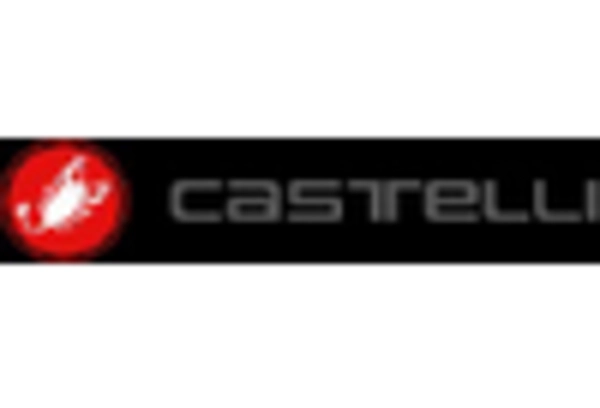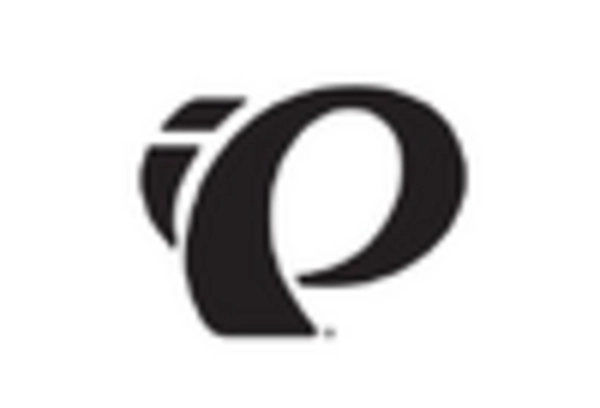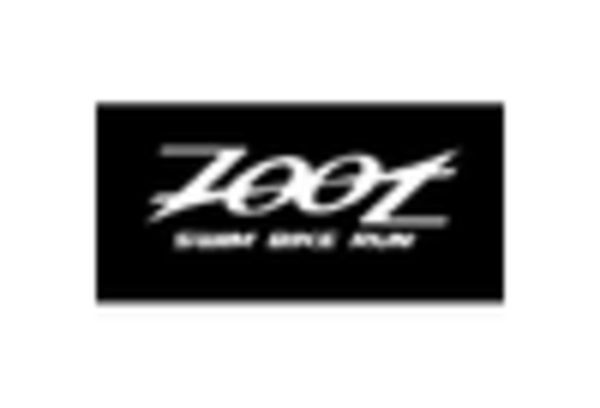Rise of Health Consciousness
The heightened awareness of health and fitness among the US population is significantly influencing the triathlon clothing market. As individuals increasingly prioritize physical activity and healthy lifestyles, participation in triathlons has become more appealing. Reports indicate that around 60% of Americans now engage in regular exercise, with many gravitating towards endurance events like triathlons. This shift in consumer behavior is driving demand for high-performance clothing that enhances athletic performance while providing comfort and support. Consequently, brands are investing in research and development to create apparel that meets the specific needs of triathletes, thereby propelling growth in the triathlon clothing market. The focus on health and fitness is expected to sustain this upward trajectory, as more individuals seek to participate in triathlons and require appropriate clothing to support their endeavors.
Growing Participation in Triathlons
The increasing number of participants in triathlons is a primary driver for the triathlon clothing market. In recent years, the number of registered triathletes in the US has shown a steady growth, with estimates indicating a rise of approximately 10% annually. This surge in participation is attributed to the growing popularity of fitness and endurance sports, as well as the increasing awareness of health and wellness. As more individuals engage in triathlons, the demand for specialized clothing designed for performance and comfort is likely to escalate. This trend suggests that the triathlon clothing market will continue to expand, catering to a diverse range of athletes, from beginners to seasoned competitors. Consequently, manufacturers are focusing on innovative designs and materials to meet the evolving needs of this expanding consumer base.
Sustainability Trends in Sportswear
The growing emphasis on sustainability within the sportswear industry is emerging as a crucial driver for the triathlon clothing market. Consumers are increasingly seeking eco-friendly options, prompting brands to adopt sustainable practices in their production processes. This shift is reflected in the rising demand for clothing made from recycled materials and organic fabrics. Market Research Future indicates that approximately 30% of consumers are willing to pay a premium for sustainable products. As awareness of environmental issues continues to rise, manufacturers in the triathlon clothing market are likely to prioritize sustainability in their offerings. This trend not only aligns with consumer values but also positions brands favorably in a competitive market, potentially leading to increased sales and brand loyalty.
Technological Innovations in Fabric
Technological advancements in fabric and garment construction are transforming the triathlon clothing market. Innovations such as moisture-wicking materials, temperature regulation fabrics, and aerodynamic designs are becoming increasingly prevalent. These advancements not only enhance performance but also improve the overall experience for athletes. For instance, the introduction of fabrics that provide UV protection and anti-chafing properties is appealing to triathletes who spend extended periods outdoors. Market data suggests that the segment of high-tech performance apparel is expected to grow by approximately 15% over the next five years. As manufacturers continue to invest in research and development, the triathlon clothing market is likely to witness a surge in demand for technologically advanced products that cater to the specific needs of athletes.
Influence of Social Media and Community
The role of social media and community engagement is becoming increasingly significant in the triathlon clothing market. Platforms such as Instagram and Facebook allow athletes to share their experiences, training tips, and gear recommendations, fostering a sense of community among triathletes. This social interaction not only motivates individuals to participate in triathlons but also influences their purchasing decisions regarding clothing. Brands that effectively leverage social media marketing strategies are likely to capture a larger share of the market. Additionally, community events and local triathlon clubs are promoting the sport, further driving demand for specialized clothing. As the online presence of triathlon culture continues to grow, the triathlon clothing market is expected to benefit from increased visibility and consumer engagement.

















Leave a Comment